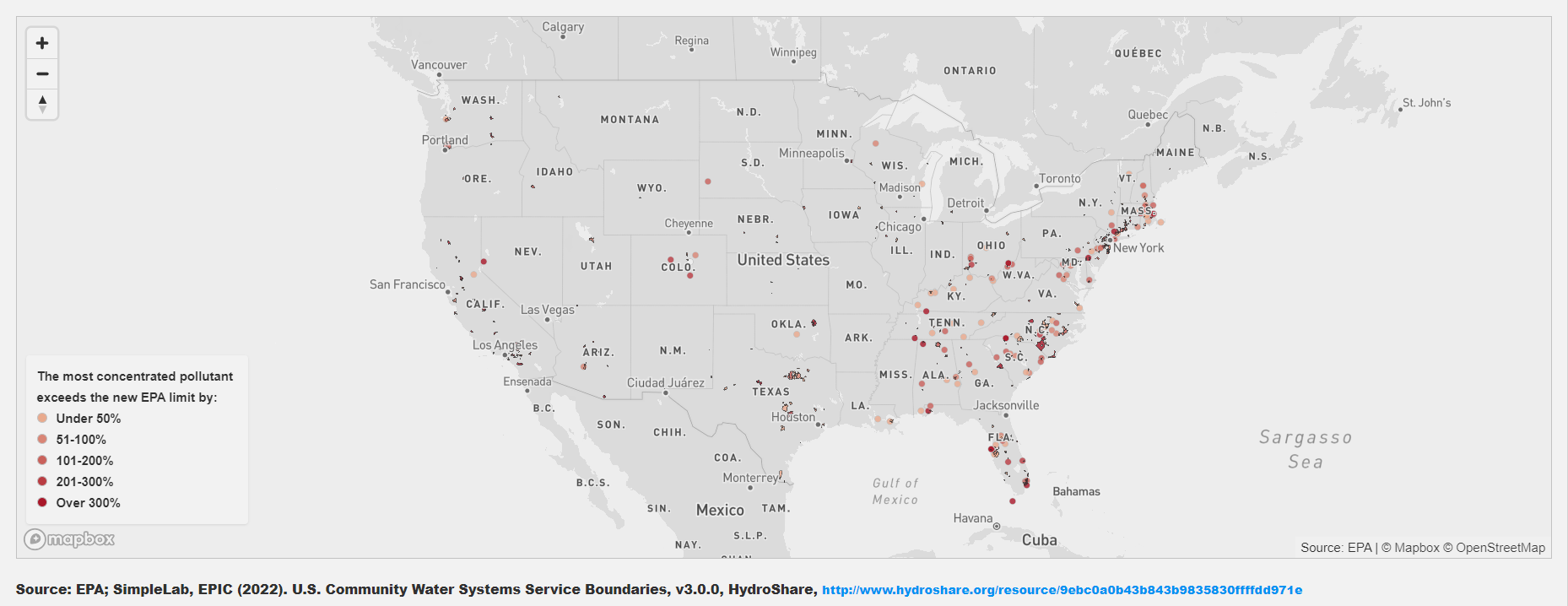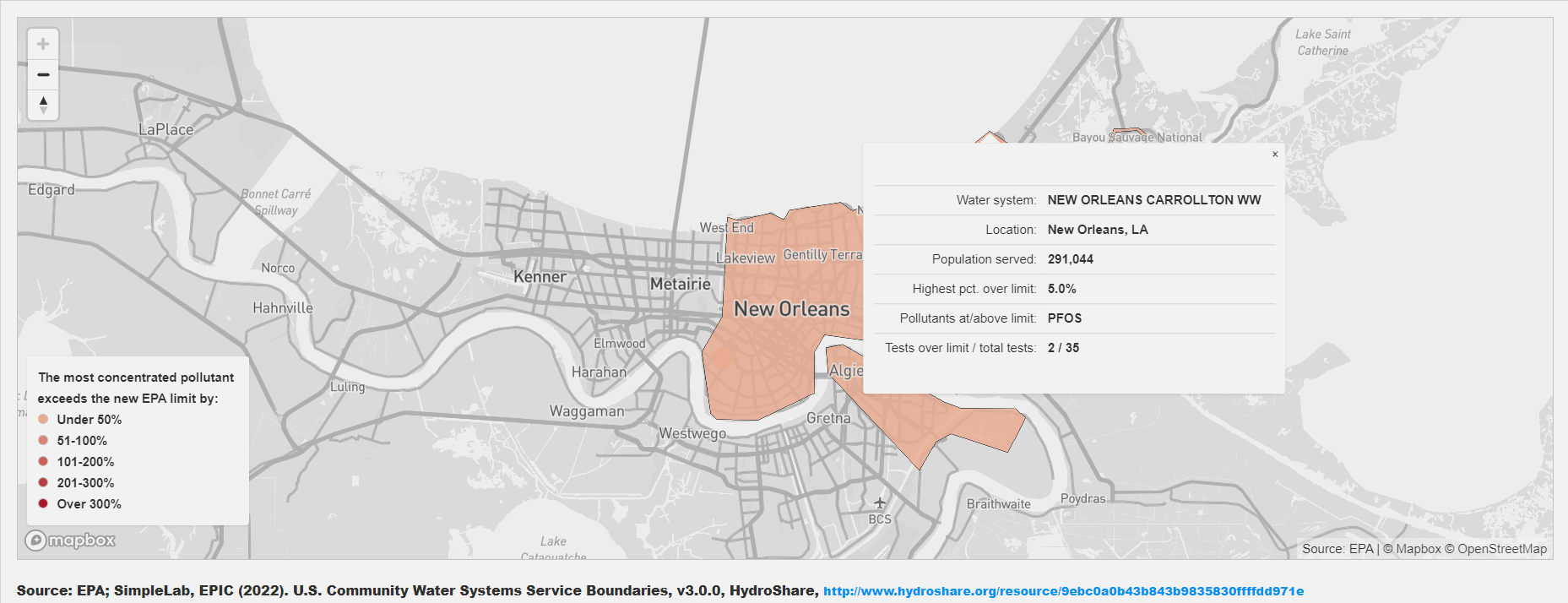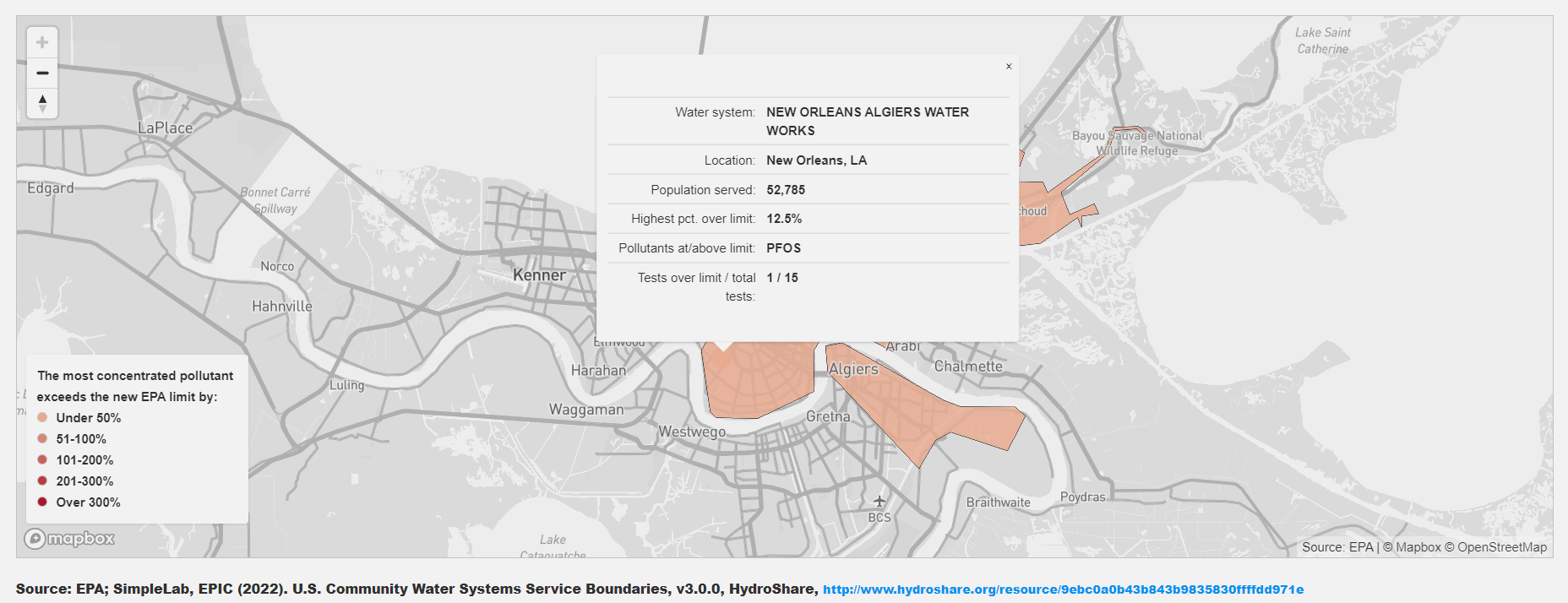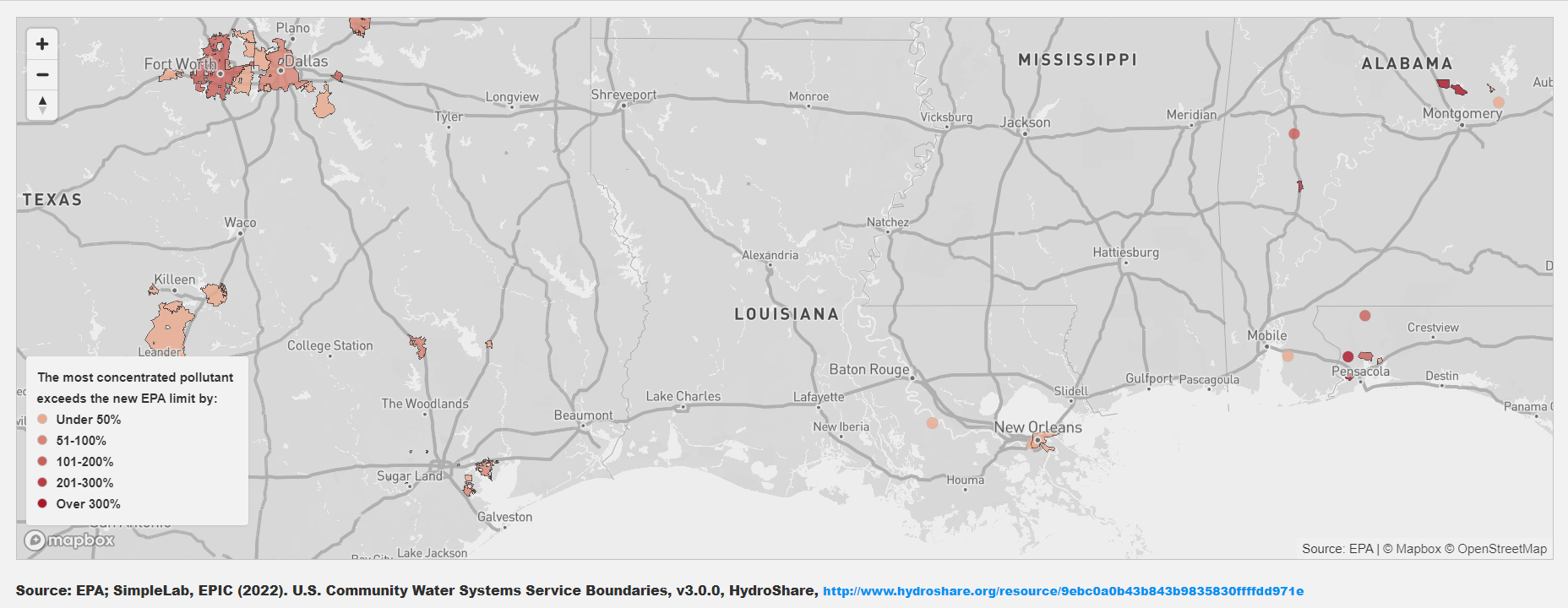Mitigating Eternal Toxins: Understanding the PFAS Drinking Water Regulation
By: Taya Fontenette, Policy and Research Coordinator
Overview
In response to ever growing concerns over the presence of per- and polyfluoroalkyl substances (PFAS) in drinking water, the Environmental Protection Agency (EPA) took a significant step forward with the announcement of the final National Primary Drinking Water Regulation (NPDWR) for six PFAS compounds on April 10, 2024. This regulation represents the first-ever nationwide standard specifically targeting PFAS contamination in drinking water, an issue that has been plaguing our nation for decades.
PFAS, commonly referred to as 'forever chemicals' due to their inability to naturally degrade, are known to resist water and grease. Widely present in various consumer products and industrial processes, PFAS have been associated with adverse health effects, including increased risks of cancer, reproductive disorders, and immune system dysfunction. These health risks can significantly impact quality of life. The finalized NPDWR is expected to significantly reduce exposure for approximately 100 million people across the nation.
The EPA first announced the proposal of the PFAS NPDWR on March 24, 2023, reviewing approximately 120,000 comments on the proposed rule. Water utilities have three years to test and monitor their water for PFAS contamination. Beginning in five years (2029), public water systems that have PFAS in drinking water which violates one or more of these MCLs must take action to reduce levels, come into compliance, and provide notification to the public of the violation. For the most dangerous compounds, perfluorooctanoic acid (PFOA) and perfluorooctane sulfonate (PFOS), the EPA is establishing a non-enforceable Maximum Contaminant Level Goal (MCLG) of zero parts per trillion (ppt). By setting stringent monitoring and compliance requirements, the EPA aims to mitigate health risks associated with PFAS contamination in drinking water and enhance public health outcomes for communities nationwide.
Final NPDWR for PFAS
Is your water system among hundreds that reported PFAS above new EPA limits?
USA TODAY has identified 608 systems nationwide that have measured PFAS levels at or above the newly established limits since 2023. Collectively, these systems serve nearly 35 million people.
PFOS were detected above the new limits in 3 of the 50 total tests conducted at the Carrollton and Algiers Water Works plants.
USA Today - Is your water system among hundreds that reported PFAS above new EPA limits? See our map.
Accountability in Regulation
While we recognize the significance of this regulatory step, it's essential to acknowledge that this regulation addresses only a fraction of the vast array of over 13,000 PFAS chemicals present in the environment. There remains a pressing need to expand regulatory efforts to encompass a more comprehensive range of PFAS compounds to fully safeguard public health.
Most importantly, industry must be held accountable for its role in PFAS contamination and environmental degradation. The EPA and the federal government must proactively enforce regulations, impose penalties for non-compliance, and advocate for industry responsibility in addressing PFAS pollution in both water and air. This may necessitate exploring legal avenues to hold polluting industries financially liable for cleanup efforts and mitigation measures. The EPA is currently taking steps to address this through the Comprehensive Environmental Response, Compensation, and Liability Act (CERCLA) for PFOA and PFOS.
The increased regulation has the potential to cause significant financial burden that utilities will face in implementing new practices and technologies to comply with the NPDWR. The costs associated with monitoring, remediation, and compliance measures are substantial and are likely to be passed on to ratepayers, placing a considerable strain on households and communities already facing economic challenges. As we move forward, it's essential to explore avenues for continuous federal aid to alleviate the financial burden on utilities and ratepayers while ensuring the effective implementation of PFAS regulations.
As of now, the Bipartisan Infrastructure Law (BIL) has allocated over $9 billion in federal funding to address emerging contaminants, including PFAS, in drinking water. Alongside the release of the NPDWR, the EPA announced an additional $945 million in funding through President Biden’s Investing in America agenda to provide additional grants to small or disadvantaged communities. This funding can be used for initial PFAS testing and treatment at both public water systems and for homes served by privately owned wells. We applaud the EPA and Biden Administration for their efforts to increase funding and assistance to small and individual water systems.
To address the broader issue of unregulated contaminants and planning for future regulatory requirements, utilities must adopt a proactive and forward-thinking approach. This includes designing water treatment facilities and infrastructure capable of addressing not only current PFAS contamination levels but also future, more stringent regulatory standards. By incorporating robust monitoring and treatment technologies, utilities can ensure resilience against evolving PFAS regulations and emerging contaminants, safeguarding public health and environmental quality for years to come.
Timeline
Within three years (2024-2027):
Initial monitoring must be completed.
Starting three years following implementation (2027-2029):
Results of initial monitoring must be included in Consumer Confidence Reports.
Regular monitoring for compliance must begin, and results of compliance monitoring must be included in Consumer Confidence Reports.
Public notification for monitoring and testing violations.
Starting five years after (beginning in 2029):
Comply with all Maximum Contaminant Levels (MCLs).
Public notification for MCL violations.
For further insights into the PFAS hazardous waste designation under CERCLA, delve into our comprehensive policy brief, 'Mitigating Eternal Toxins: Understanding the PFAS Hazardous Designation’.








